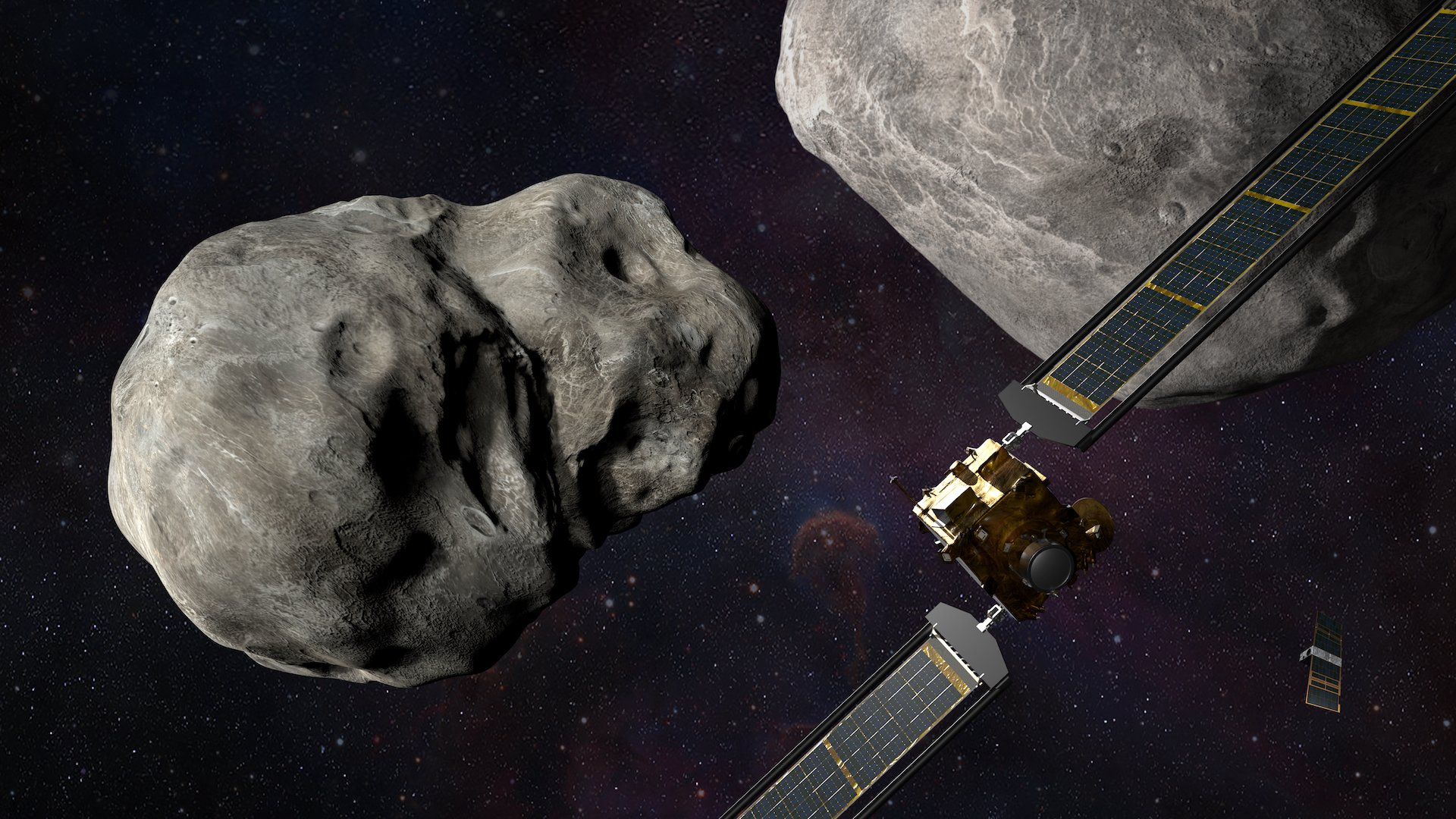
NASA’s DART spacecraft and the Italian Space Agency’s LICIACube prior to impact at the Didymos binary system. Illustration by NASA/Johns Hopkins Applied Physics Laboratory/Steve Gribben.
WASHINGTON, DC — After closely analyzing data from an array of telescopes and radars, NASA says it definitely knocked the shit out of an asteroid.
Two weeks after slamming a refrigerator-sized spacecraft into an asteroid, NASA said the strike appears to have successfully changed the object’s orbit by over 30 minutes, a change at the top end of most of NASA’s own models.
The strike, NASA officials said in announcing the results, demonstrates that humanity could be saved from an asteroid hurtling toward the planet. The space agency announced the result in a press conference Tuesday, Oct. 11.
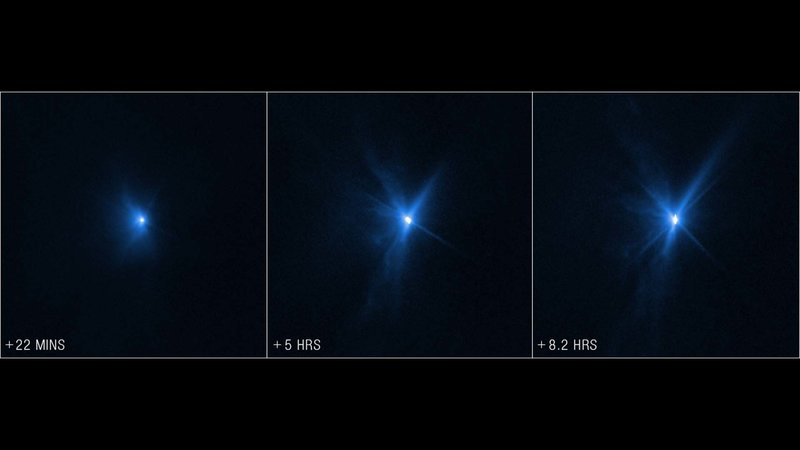
Left to right, these images from NASA’s Hubble Space Telescope — taken 22 minutes, 5 hours, and 8.2 hours after NASA’s Double Asteroid Redirection Test intentionally impacted Dimorphos — show expanding plumes of ejecta from the asteroid’s body. Composite by NASA/European Space Agency/Jian-Yang Li. Image processing by Alyssa Pagan.
NASA called the spacecraft's mission the Double Asteroid Redirection Test, or DART. Traveling at 4 miles per second, the DART craft smashed into Dimorphos, a 160-meter-wide asteroid, on Sept. 26. Officials from NASA and the Johns Hopkins Applied Physics Laboratory, or APL, spent the next two weeks studying Dimorphos after the impact, and announced Tuesday that DART had shortened the space object’s orbit around its parent asteroid, Didymos, from 11 hours, 55 minutes, to 11 hours, 23 minutes. The 32-minute change was confirmed by a series of optical telescopes and radar.
NASA administrator Bill Nelson announced the success at NASA headquarters. "This is a watershed moment for planetary defense and a watershed moment for humanity,” he said.
NASA officials said that they had expected to change the orbit by about 10 minutes, but that if they had altered the asteroid’s course by just 73 seconds, DART would’ve been considered a success.
The 32-minute result was at the top end of results that scientists had calculated as at all likely.
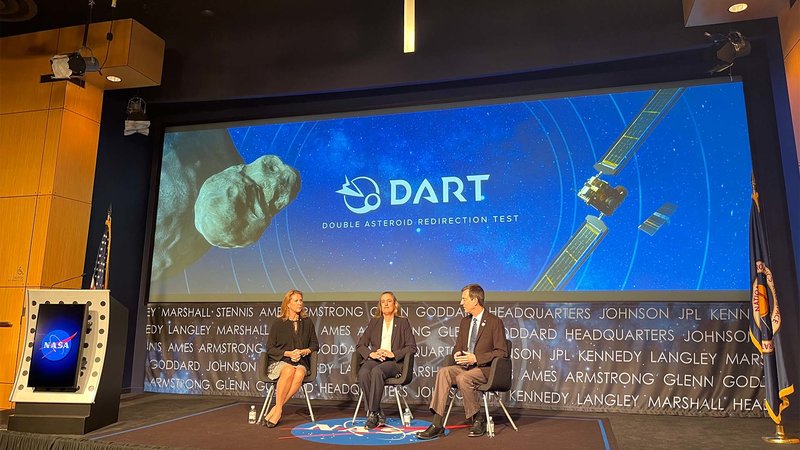
From left to right, Lori Glaze, director of the planetary science division at NASA headquarters; Nancy Chabot, DART coordination lead at the Johns Hopkins Applied Physics Laboratory; and Tom Statler, DART program scientist at NASA headquarters Tuesday, Oct. 11, 2022. Photo by Jenna Biter/Coffee or Die Magazine.
Dr. Terik Daly, a planetary scientist on the DART mission team at Johns Hopkins APL, told Coffee or Die Magazine in September about the impact’s potential for a recoil effect on Dimorphos.
“If you think of shooting a rifle at something, you get a bunch of debris knocked up, right? And, if there’s a lot of that debris, it kind of acts a bit like a rocket engine and actually gives the asteroid more of a shove than it would with just the spacecraft,” Daly said.
Tuesday, NASA and Johns Hopkins APL officials confirmed that just such an extra "shove" had happened in the DART test. The loose, rocky material of Dimorphos acted as a booster, officials said. The impact also resulted in Dimorphos' hugging several meters more tightly in its orbit to its parent asteroid.
Giorgio Saccoccia, president of the Italian Space Agency, which partnered with NASA, said the test was not just abstract science. “I think the planet can feel a bit safer in the future,” Saccoccia said. An asteroid the size of Dimorphos could cause regional devastation if it impacted on Earth, officials said.
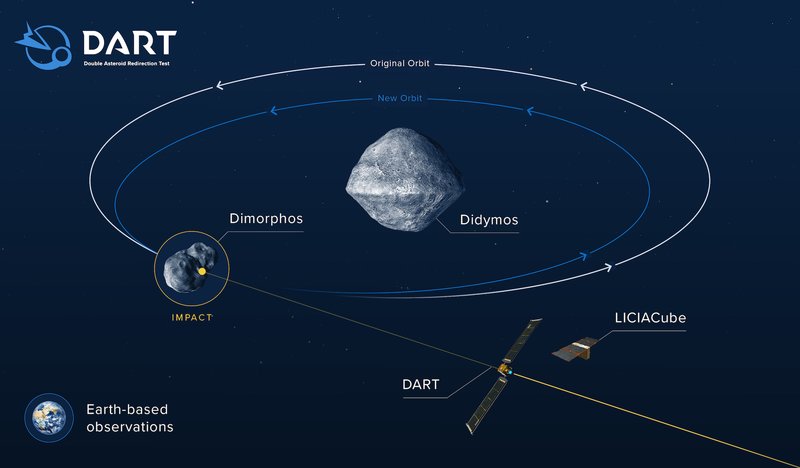
Infographic showing the effect of DART's impact on the orbit of Dimorphos by NASA/Johns Hopkins APL.
Still, if humans hope to intercept an asteroid hurtling for Earth, NASA says it would need a heads-up of years.
NASA says its scientists don’t know of any asteroids the size of Dimorphos currently in an orbit that poses a threat to Earth. But astronomers admit they have only accounted for about 40% of those they believe are within striking distance of Earth. Scientists estimate that an asteroid the size of Dimorphos would cause regional devastation if it struck our planet.
That’s where the Near Earth Object, or NEO Surveyor mission, takes over. That project, currently in the planning stages, will be NASA’s tool to find 90% of the asteroids about the size of Dimorphos.
Tom Statler, DART program scientist at NASA headquarters, said, “This is just the beginning.”
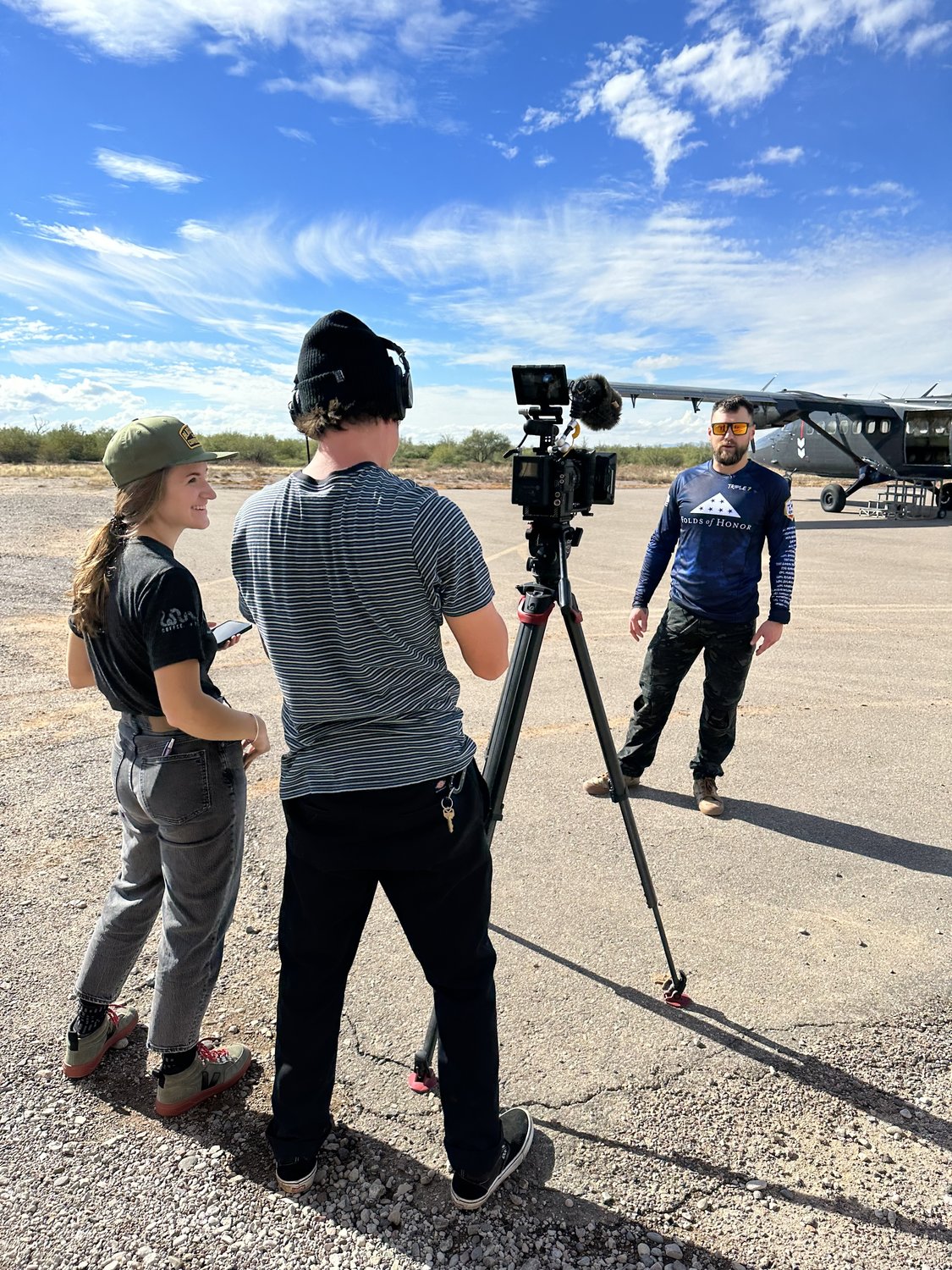
Jenna Biter is a staff writer at Coffee or Die Magazine. She has a master’s degree in national security and is a Russian language student. When she’s not writing, Jenna can be found reading classics, running, or learning new things, like the constellations in the night sky. Her husband is on active duty in the US military. Know a good story about national security or the military? Email Jenna.
BRCC and Bad Moon Print Press team up for an exclusive, limited-edition T-shirt design!
BRCC partners with Team Room Design for an exclusive T-shirt release!
Thirty Seconds Out has partnered with BRCC for an exclusive shirt design invoking the God of Winter.
Lucas O'Hara of Grizzly Forge has teamed up with BRCC for a badass, exclusive Shirt Club T-shirt design featuring his most popular knife and tiomahawk.
Coffee or Die sits down with one of the graphic designers behind Black Rifle Coffee's signature look and vibe.
Biden will award the Medal of Honor to a Vietnam War Army helicopter pilot who risked his life to save a reconnaissance team from almost certain death.
Ever wonder how much Jack Mandaville would f*ck sh*t up if he went back in time? The American Revolution didn't even see him coming.
A nearly 200-year-old West Point time capsule that at first appeared to yield little more than dust contains hidden treasure, the US Military Academy said.












